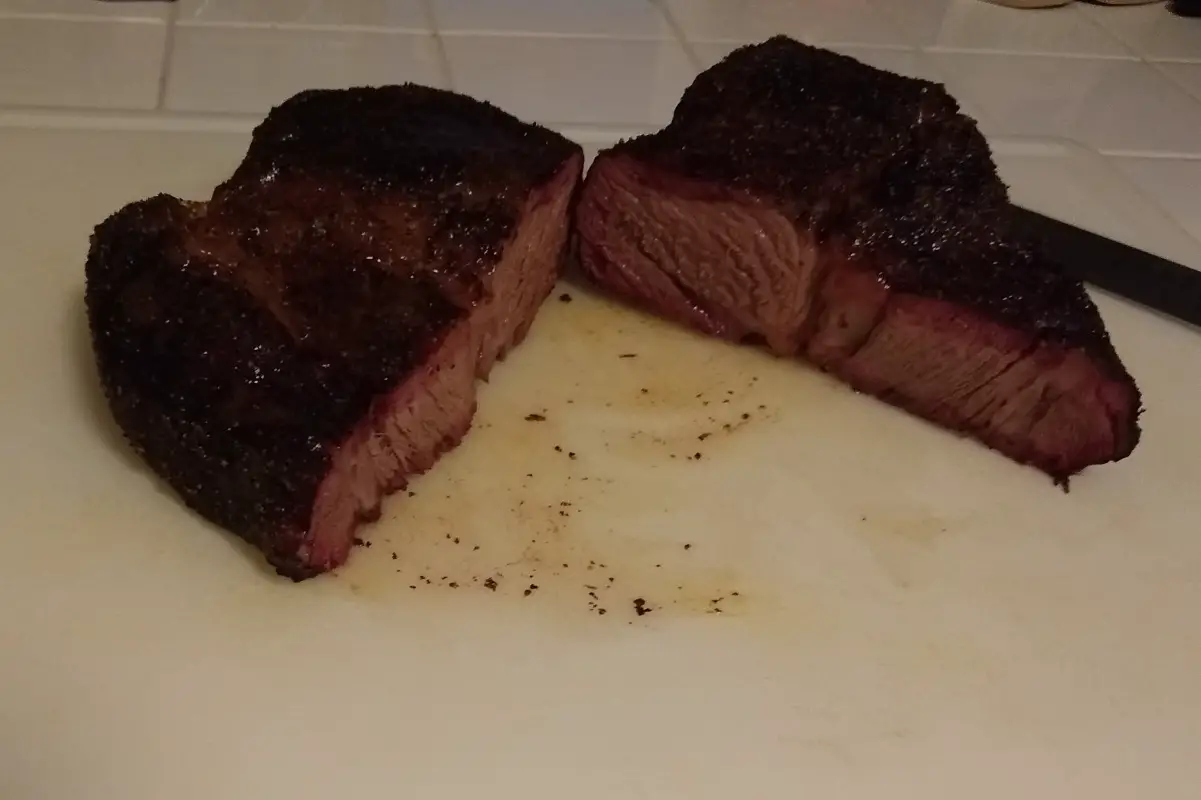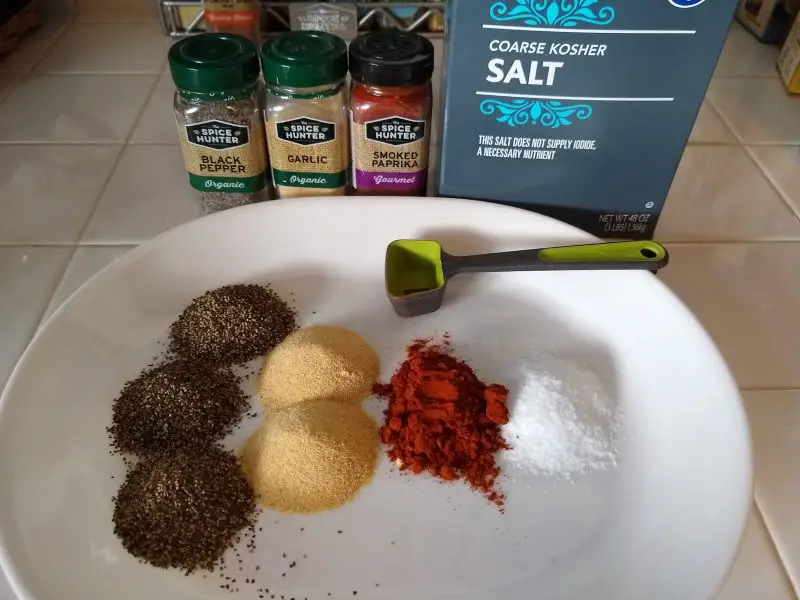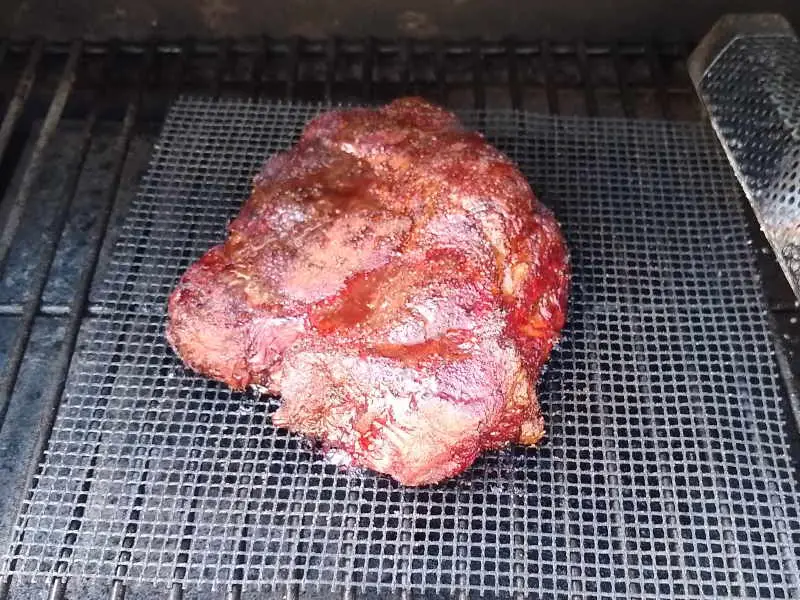
For most people, the best part of an excellently smoked brisket is the smoky, blackened bark on the exterior. Almost all pellet smoker enthusiasts yearn for a crusty, delicious bark, which, although not easy to form, is also not impossible, regardless of user experience. So how can one get a good bark and make the most of a pellet smoker?
To get a good bark with a pellet smoker, choose a cut of meat with a lot of marbling and trim thick fat to under ¼ inch. Use a dry rub that is low in water-soluble ingredients like sugar; look for pepper and garlic. Pick a strong flavor wood pellet such as Hickory and maintain a consistent temperature of 225° or above.
Are you an outdoor cooking enthusiast desperate to get that dense, delicious bark on your brisket? If so, then you couldn’t be in a better place. Read on for an in-depth guide on how to get a good bark when using a pellet smoker.
Note: most links in this article are Amazon.com Affiliate links, see Affiliate Disclosure, thank you.
What Is a Bark When Smoking Meat?
Bark is a tasty crust on smoked meat resulting from complex chemical reactions that occur when a cut of meat is smoked. When preparing smoked ribs, pork butt, or brisket, you’ll get a bark when the meat is exposed to oxygen and heat.
Similar to onions and parfaits, smoked meat usually has layers: the inner juicy meat, the fine membranous pellicle, and the crusty external bark that seals the internal layers.
Below are crucial tips to observe if you want to get impressive barks with a pellet smoker.
Click here to read our Traeger Pro Series 22 Review
Choose the Right Cut
The type of cut you choose plays a pivotal role in determining the outcome of your brisket. Although a decent amount of fat is ideal when smoking meat, too much fat will absorb the smoke, consequently making it impossible for the smoke to infuse the internal layers of the meat.
Therefore, you should consider trimming excess fat around the edges and the top. The fat shouldn’t be more than ¼ inch (0.64 cm) above your meat’s muscle layer. Getting the meat selection right is just as important as smoking the meat correctly inside your pellet smoker.

Check on Your Rub
The quality of ingredients you include in your rub plays a crucial role in determining bark density, crustiness, and quality. Water-soluble ingredients like sugar and salt tend to dissolve due to moisture either in the smoke or the meat. This means that salt and sugar, no matter how much is included in the rub, won’t directly impact bark formation or thickness.
However, ingredients that don’t dissolve as the moisture levels inside the pellet smoker increase will remain on the surface and kickstart the glaze formation. And as your cut of meat continues to smoke, the fats will start to render, in the process dissolving the fat-soluble ingredients in your rub.
Undissolved spices and herbs help in the formation of a pasty substance on your meat’s surface. As the paste continues to dry, a pellicle will form, which, together with the crust, form part of the delicious, smoky bark.
While you can be creative and include ingredients you prefer best in your rub, keeping it basic will also help you get a consistent bark. Some basic ingredients include salt, sugar, paprika, and pepper. Ideally, you can also go for store-bought rubs that are designed to increase bark thickness, like the Dinosaur Bar-B-Que Cajun Foreplay Dry Spice Rub.
Our all-purpose rub recipe is simple to make and customized to match your meat’s flavor profile.
Start with a large shake container and add three tablespoons of course pepper, two tablespoons of garlic granules, one tablespoon kosher salt, and one tablespoon smoked paprika. We refer to our mix as 3211 for obvious reasons, lol.
Control Smoke Exposure
Smoke also plays an important role in the creation of thick, crusty bark. The longer your cut of meat is exposed to smoke, the more smoke particles attach to the glaze, and the darker its appearance will become.
Pellet grills usually produce just the right amount of smoke at around 225°F (107°C), and if you set the correct temperature on your pellet smoker, you shouldn’t have to worry too much about the smoke level as long as white smoke isn’t being emitted.
An important factor that affects the type of smoke produced in the Pellet Smoker is the type of pellets used. Hickory and Mesquite hardwoods usually have more smoke flavor compared to hardwood blends and lighter fruitwoods. Hardwood pellets like the Bear Mountain BBQ 100% All-Natural and the Traeger Grills All Natural Hardwood Pellets are great for making thick barks in pellet smokers.
Final note, you want clean smoke! If your smoke is heavy or dark, that could indicate that you are not burning clean. Dirty smoke can give your crust a bitter taste. In most cases, cleaning your pellet burning pot will get a clean burn and have a clean smoke.
Click here to read our article All About Wood Pellets
Maintain a Consistent Smoking Temperature
If you want to create a good, sufficiently blackened, finger-licking bark, then you’ll need to manage your pellet smoker’s temperature. Finding a balance is essential, as excessively low temperatures will prevent bark formation, while extremely high temperatures will char your cut, and you don’t want that!
Ideally, a good temperature range when smoking meat using a pellet smoker is between 225-235°F (107-113°C). This is because meat inside a pellet smoker cooks in stages. The first stage is when the temperature rises inside the smoker and starts to evaporate the moisture content in your meat.
At the halfway phase of cooking, the meat will start to cool and cook slower due to the evaporating moisture. This vital stage is called the stall. Once the moisture has evaporated, the rub will start to dry out, thereby kickstarting the Maillard reaction. The reaction will affect the chemistry of your meat’s surface, slowly creating the pellicle.
The Maillard process cannot occur when the temperature is too low, while extreme temperatures will dry your meat, making a glazed exterior as opposed to a thick, delicious bark. Therefore, maintaining a consistent temperature when cooking with a pellet smoker is crucial, at least if you want to get a good bark.

Tricks and Tips To Increase the Chances of Getting a Good Bark
Getting that good bark when using a pellet smoker hinges greatly on your ability to prepare the meat and smoke it in the right conditions. Below are important tips that can help you get that thick, tasty bark.
Avoid Excessive Spritzing
While some outdoor grilling enthusiasts will swear by basting meat now and then, it’s usually not a good idea if you want a thick back when using a pellet smoker. This is because meats usually have enough moisture content to break down water-soluble ingredients in rubs without the need for additional moisture.
Excessive moisture will almost certainly interfere with the bark formation process. Therefore, if you must baste your meat, it’s best to do so after around 3-4 hours after the rub has morphed into a crust.
Airflow Is Important
While it might be tempting to place the meat in a pan while in the pellet smoker, doing so will reduce the airflow, hence limiting the meat’s ability to dry out well. As a result, it’s crucial to place the meat directly on the grill grates to ensure enough air circulates to all parts.
Don’t Wrap Your Meat in Foil
Many first-timers usually get tempted to wrap the cooking meat in foil to fasten the smoking process. However, placing the meat in foil will almost certainly ruin the bark due to steam accumulation inside the foil, making the bark soft. If you wrap your meat, remove it from the foil 5 degrees before your desired finished temperature and allow it to crisp up in your smoker.
Wrapping Up
You don’t have to be a grilling expert to get a good bark with a pellet smoker. However, you’ll need to choose the right cut with just the ideal amount of fat. Moreover, the rub used should have a great blend of water-soluble and insoluble ingredients to promote the formation of the bark after heat exposure.
You should also maintain consistent cooking temperatures as any extreme will ruin the final outcome of your smoked meat. Try as much as possible to avoid spritzing your meat as it has enough moisture to cook inside the pellet smoker.
